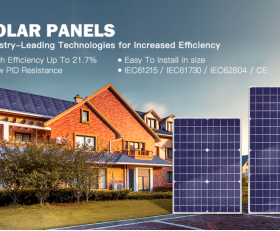When Will Solid-State Batteries Be Viable for Homes? (2025)
The transition to renewable energy and sustainable living is accelerating globally, and energy storage systems are becoming a critical component of this shift. As solar panels and wind turbines become more common in households, the need for efficient and reliable energy storage solutions grows. One of the most promising technologies on the horizon is the solid-state battery. But when will this cutting-edge technology be ready for use in homes? Experts suggest that by 2025, solid-state batteries could become viable for residential energy storage. Let’s explore what makes solid-state batteries so exciting and what challenges they face before becoming a household staple.
What Are Solid-State Batteries?
Solid-state batteries are a next-generation lithium-ion battery technology that replaces the liquid or gel electrolyte with a solid material. The electrolyte, which is the medium that allows ions to flow between the battery’s anode and cathode, is a critical component in determining a battery’s performance, safety, and longevity. In traditional lithium-ion batteries, the liquid electrolyte can degrade over time, leading to reduced capacity and, in some cases, safety risks like overheating or even catching fire.
Solid-state batteries, on the other hand, use a solid electrolyte, which offers several advantages. First, solid electrolytes are more stable and less flammable than their liquid counterparts, making solid-state batteries inherently safer. Second, the solid electrolyte can allow for the use of higher-energy materials in the anode and cathode, which can significantly increase the battery’s energy density—the amount of energy stored per unit of mass or volume. This means solid-state batteries can store more energy in the same size and weight compared to traditional lithium-ion batteries.
Why Are Solid-State Batteries Important for Home Energy Storage?
Home energy storage systems are essential for maximizing the use of renewable energy sources like solar panels. By storing excess energy generated during the day, homeowners can use it at night or during periods of low sunlight, reducing their reliance on the grid and lowering their energy bills. However, current lithium-ion batteries have limitations that solid-state technology could overcome.
Higher Energy Density: Solid-state batteries can store up to twice as much energy as traditional lithium-ion batteries. This means homeowners could store more energy in a smaller or lighter battery, making them more efficient and easier to install.
Longer Lifespan: Solid-state batteries are expected to have a longer lifespan, with some estimates suggesting they could last up to 10-15 years. This would reduce the need for frequent replacements and lower the overall cost of ownership.
Improved Safety: As mentioned earlier, solid-state batteries are safer due to their non-flammable solid electrolyte. This makes them a more reliable choice for residential use, especially in environments where children and pets are present.
Faster Charging: Some solid-state battery designs allow for faster charging times, which could be a significant advantage for homeowners who need to recharge their batteries quickly, especially during peak demand times.
Challenges on the Path to 2025
While the potential benefits of solid-state batteries are clear, there are several challenges that need to be addressed before they become viable for home energy storage.
Cost: Solid-state batteries are still in the development phase, and they are likely to be more expensive than traditional lithium-ion batteries when they first become available. However, as production scales up and manufacturing processes improve, costs should decrease over time.
Technological Hurdles: Solid-state battery technology is not yet fully mature. Researchers are working on optimizing the materials and manufacturing processes to ensure that solid-state batteries can meet the demands of real-world applications. Issues like solid electrolyte degradation and interface stability between the electrolyte and electrodes are areas that require further research.
Regulation and Standards: As with any new technology, solid-state batteries will need to meet safety and performance standards set by regulatory bodies. This process can take time, but it is essential to ensure that the technology is reliable and safe for consumer use.
Recycling and Sustainability: Like all battery technologies, solid-state batteries will eventually reach the end of their useful life. Establishing efficient recycling processes and ensuring that the materials used in solid-state batteries are sustainable and environmentally friendly will be crucial for their widespread adoption.
The Roadmap to 2025
Despite these challenges, progress in solid-state battery technology is happening at a rapid pace. Major automakers, battery manufacturers, and research institutions are investing heavily in solid-state battery development. For example, companies like Toyota, Samsung, and IBM are working on solid-state battery projects, with some already testing prototypes in vehicles and other applications.
In the context of home energy storage, the focus is likely to be on scalability and cost reduction. As production scales up, the cost of solid-state batteries should decrease, making them more accessible to homeowners. Additionally, advancements in materials science and manufacturing techniques will help overcome some of the technological hurdles.
By 2025, it is reasonable to expect that solid-state batteries will be commercially available for a range of applications, including home energy storage. While they may not completely replace traditional lithium-ion batteries overnight, they will offer a more efficient and safer alternative for homeowners looking to adopt renewable energy technologies.
The development of solid-state batteries represents a significant step forward in energy storage technology. Their potential to offer higher energy density, longer lifespan, and improved safety makes them an attractive option for home energy storage systems. While challenges remain, the pace of innovation suggests that solid-state batteries could become viable for residential use by 2025.
As the world continues to transition toward renewable energy sources, the role of energy storage will become increasingly important. Solid-state batteries are poised to play a key role in this transition, helping homeowners store and use energy more efficiently and sustainably. The next few years will be crucial in determining whether solid-state batteries can meet their potential and become a mainstream technology in the home energy storage market.

